Few places rank as high on travelers’ bucket lists as Italy. Whatever your taste in travel, you’ll satisfy it in this country that is at once exotic and familiar. History, art, food, music, architecture, culture, sacred sites, charming villages, and stunning scenery are all around, and in an atmosphere that only the most confirmed curmudgeon could fail to enjoy.
From the soaring Dolomite mountains in the north to the beaches of Puglia and the ancient temples of Sicily, Italy is filled with outstanding places to see. These range from magnificent natural and scenic wonders to some of the greatest masterpieces of art and architecture the world has known. No matter where you choose, you can’t go wrong.
Plan your sightseeing with our list of the best places to visit in Italy.
Florence

The showcase of the Italian Renaissance, Florence can at times seem like one giant art museum. The Duomo, the Cathedral of Santa Maria del Fiore, is a landmark of world architecture, topped by its gravity-defying massive dome.
Together with its marble-inlaid bell tower by Giotto and the octagonal Baptistery with its incomparable bronze doors by Ghiberti, this is one of the world’s finest ensembles of Renaissance art.
Half a dozen art museums brim with paintings and sculpture, while more masterpieces decorate its churches and palaces. Before you overdose on art in the Uffizi Gallery and Pitti Palace, stroll through the Boboli Gardens and explore the artisans’ studios and workshops of the Oltrarno, or shop for leather in Santa Croce.
Rome
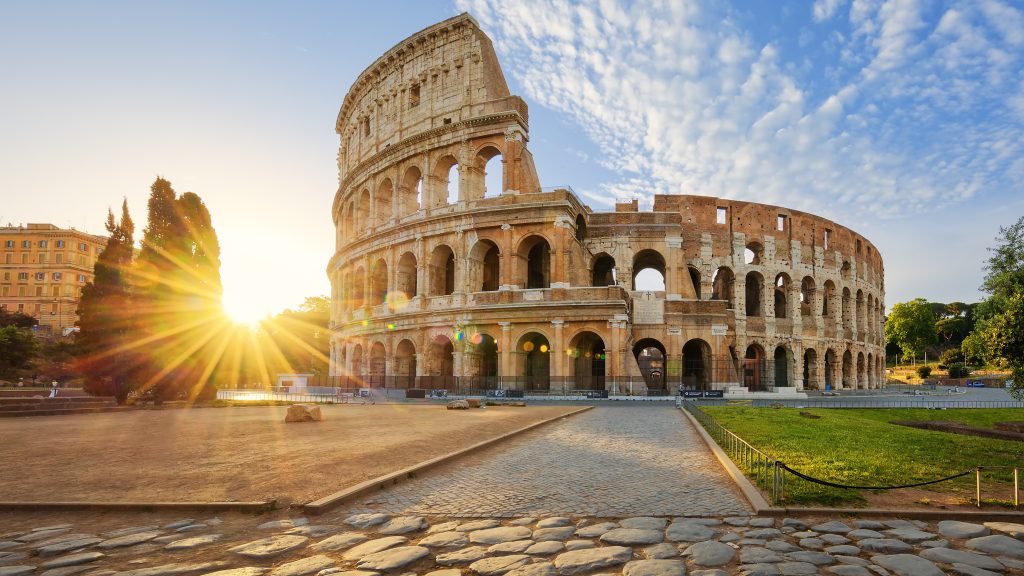
Both for its history as the capital of much of ancient Europe and for its present day role as one of Europe’s most vibrant cities, for most tourists traveling to Italy, Rome heads the list of places to visit. Relics of its ancient glories–the Colosseum, the Forum, the Pantheon, the Appian Way, and the Palatine Hill–vie with the vast riches of the Vatican as the top attractions.
But between the important sights like the Sistine Chapel and Michelangelo’s Pieta, take time to enjoy the city itself. Relax in the Borghese gardens; eat gelato on the Spanish Steps; explore the narrow streets of Trastevere; sip morning cappuccino in cafés; window-shop on the Via Veneto; and toss a coin in Trevi Fountain, so you can return again and again. It will take several trips to see it all.
Book now & enjoy
Tuscan Hill Towns
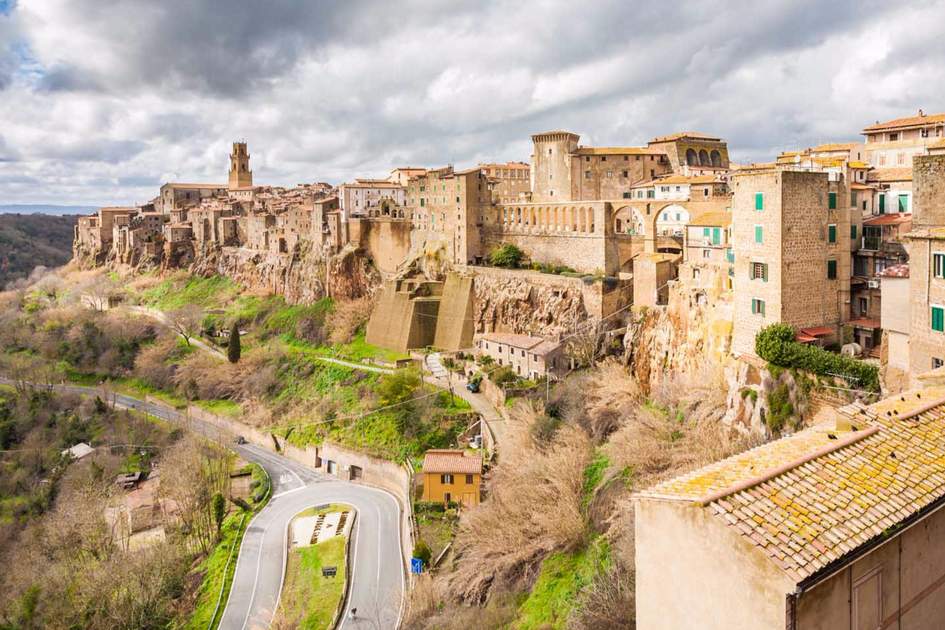
The undulating landscape of Tuscany is crowned by stone towns whose foundations go back to the Etruscans. Each sits atop a hill, and many still have the castles and towers that once defended their commanding positions.
It’s difficult to choose one above the others, as each has its own architecture, art, character, and story to tell. Fairly bristling with towers and enclosed in walls that are largely intact, San Gimignano looks much as it did in the Middle Ages, when it was an important stop on the pilgrims’ route to Rome.
Volterra was an important Etruscan center before the Romans came and still has remains of both civilizations today. The tourist attractions of Arezzo are the legacy of the many artists, architects, and poets who lived there.
Like Volterra, walled Cortona was an Etruscan settlement and later a Roman one, but adds reminders of its Florentine past as well. Cortona is one of Italy’s oldest towns. The proximity of these hill towns to the cities of Florence, Siena, Pisa, and Luca fills Tuscany with a concentration of many of the best places to visit in Italy.
Venice

Who could fail to love a city whose streets are made of water, whose buses are boats, and where the songs of gondoliers linger in the air? It is a magic city, and its major attraction to tourists is the city itself.
The hub of the city is the broad Piazza San Marco, St. Mark’s Square, surrounded by several of its top tourist attractions. The great Basilica of St. Mark stands beside the Doge’s Palace, and overlooking both is the tall Campanile.
Gondolas congregate at the end of the plaza in the Grand Canal, and in the other direction, a gate under the clock tower leads into a warren of narrow, winding passageways, where you’re sure to get lost on the way to Rialto Bridge. But getting lost is one of the greatest pleasures of Venice, where a postcard scene awaits around each corner.
You deserve these deals
Lake Como

Italy’s most beautiful lake, Como has been the favorite summer retreat of the rich and famous since ancient Romans fled Milan’s summer heat to cool off in villas along its steep shores. Later villas decorate its tightly clustered towns, especially pretty Bellagio, artfully set on a point where the three narrow arms of the lake meet.
A microclimate makes Como’s western shore temperate even in winter, so the white peaks of the Alps just to the north can be viewed between palm trees and camellias. Don’t overlook the town of Como, on the southern shore, well worth a stop before boarding a steamer to explore the lake.
Just to the west of Lake Como is Lake Maggiore, with its own attractions; to the east is Lake Garda, a summer playground filled with water sports and other things to do.
Milan
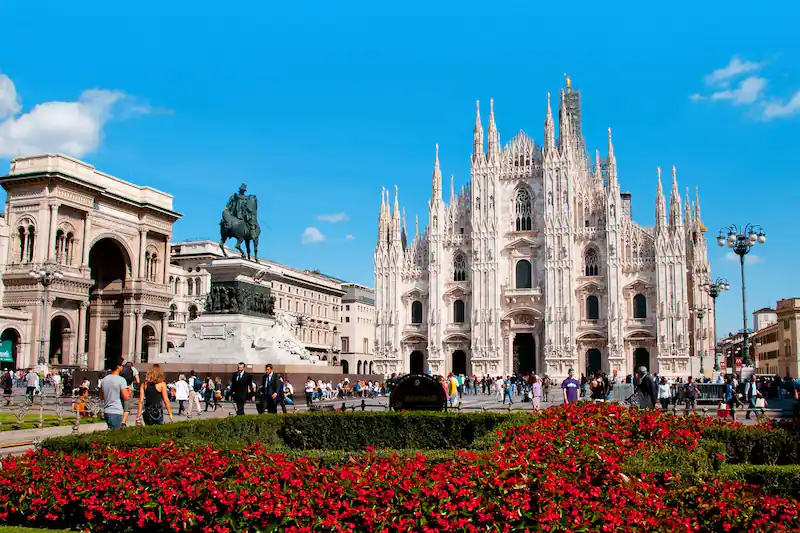
Although Milan is a major entry point for tourists because of its airport, it’s often overlooked as a destination of its own. That’s a shame, because Milan has one of the highest concentrations of artistic and architectural attractions in all Italy, and for those interested in design and fashion (not to mention shopping), it’s a must.
Milan has been the home and work place for luminaries in all these fields: Michelangelo, Leonardo da Vinci, Verdi, Enrico Caruso, Toscanini, and designer Giorgio Armani.
Il Duomo, Milan’s massive cathedral, is among the world’s most magnificent churches, and finest example of the Flamboyant Gothic style. La Scala is the world’s most prestigious opera house, Da Vinci’s The Last Supper fills the wall at a monastery, and throughout the city are museums and palaces filled with some of the world’s finest art. And no fashionista can resist a stroll through the famed Quadrilatero.
Big Deals with trip
Amalfi Coast and Capri

The high, precipitous Amalfi Peninsula juts sharply into the Mediterranean just south of Naples, forming the southern rim of Naples Bay. It’s hard to imagine a more beautiful–or unlikely setting for the towns that spill down its steep slopes.
Streets in most of these picturesque towns are stairways, and houses seem glued to the cliffs behind them. Flowers bloom everywhere, and below the towns are beaches caught in coves of emerald water.
The Amalfi Drive, along the southern coast, is one of the world’s great scenic routes. Off the end of the peninsula, and easy to reach by regular ferries, is the fabled island of Capri, with its Blue Grotto sea cave, lavish villas, and lush gardens. Sorrento, on the northern coast of the Amalfi Peninsula is a good base, an easy day trip from all the things to see and do in the region.
The Cinque Terre
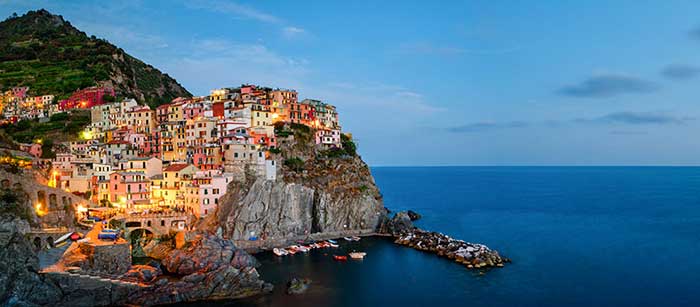
The five towns that cling to the steep, rocky Mediterranean coast north of La Spezia were almost impossible to reach by land until the railway connected them by tunneling through the headlands that separate them. Today, the trail along the cliffs that locals once used to travel from town to town is one of Italy’s great hikes; the shortest and widest of its sections, between Manarola and Riomaggiore is known as the Via dell’Amore, and will be closed until sometime in 2022, due to a landslide.
Although hiking the trail is the goal of most tourists, don’t overlook the pleasures of lingering in these little villages. Riomaggiore and Vernazza, with their narrow streets dropping down to tiny rock-bound harbors are the most filled with character, and despite its recent popularity with tourists, the Cinque Terre remains one of Italy’s most appealing attractions.
Pisa and Lucca
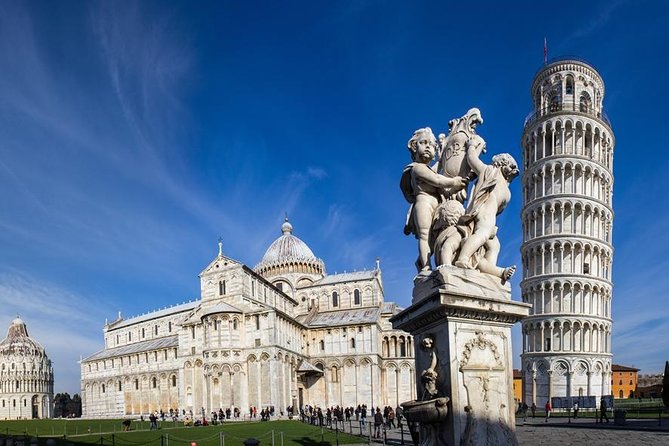
These two nearby towns are worth visiting while you’re in Tuscany, the first for the exceptional Campo dei Miracoli complex and the other for its endearing charms. The Leaning Tower of Pisa, actually the campanile for the adjacent cathedral, is a well-known Italian icon, and forms the centerpiece of a UNESCO World Heritage site that also includes the cathedral, baptistery, and Campo Santo.
The highlight of the impressive baptistery is Nicola Pisano’s intricately carved free-standing pulpit, a masterpiece of Romanesque sculpture. Completing the ensemble is a museum displaying some of the most beautiful gold and silver work of the Middle Ages and Renaissance.
Nearby, Lucca is one of Italy’s most charming towns to explore and enjoy, surrounded by wide walls whose top is a tree-lined park. Inside the walls are beautiful Romanesque and Tuscan Gothic churches, tower houses (one of which you can climb to the top), and a Roman arena that has been “fossilized” into an oval piazza.
Verona

The compact historic center of this former Roman stronghold is embraced by a deep curve in the Adige River. Dominating its heart is the remarkable well-preserved first-century Roman arena, scene of the world-renowned summer opera festival.
Several Roman arches are mixed among the medieval and Renaissance buildings, many of which show Verona’s long history as part of the Venetian empire. Alongside the river stands the large Castelvecchio, a castle built in the 14th century, guarding a brick arched bridge, Ponte Scaligero.
For all its rich treasury of architecture and art, Verona’s biggest claim to tourist fame is based on pure fiction. Verona was the setting for Shakespeare’s Romeo and Juliet, and over the past century, locals have obliged by creating homes, a balcony, and even a tomb for the fictional characters.
Pompeii and Herculaneum

In AD 79, Mt. Vesuvius erupted violently and suddenly, engulfing the thriving Roman city of Pompeii and encasing it for more than a millennium in six meters of ash and pumice-stone. The city remained frozen in time until excavations that began in the 18th century uncovered more than half of its buildings and public spaces.
The same eruption also engulfed the city of Herculaneum, but this time in molten lava, not ash. So instead of raining down and crushing buildings with its weight, the lava flowed in and filled the city from the ground up, supporting walls and ceilings as it rose, and preserving them in place.
Also preserved in this airtight seal were organic materials, such as wood, textiles, and food, giving a more complete picture of life in the first century. Details such as eating vessels and even food have been preserved as they were when the disaster struck.
Siena
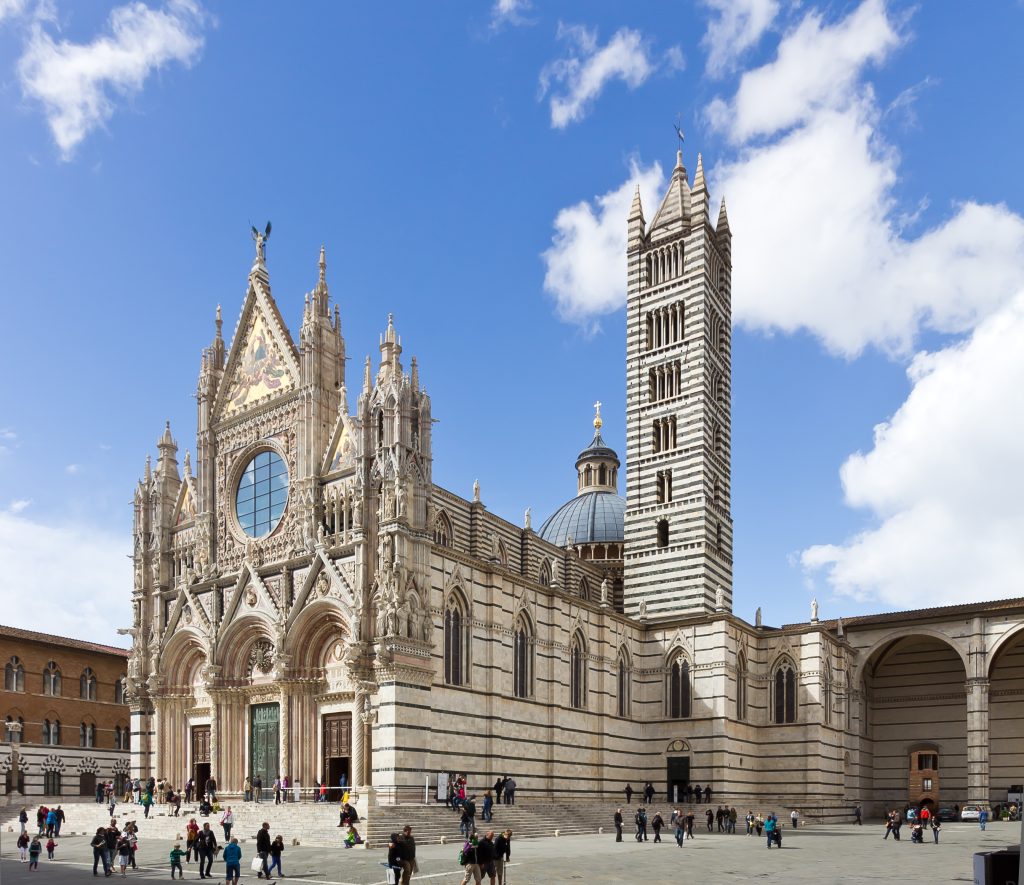
At its height in the 13th and 14th centuries, Siena rivaled Florence for its arts and culture, and it still has a wealth of art and architectural treasures. The highlight is the magnificent Cathedral of Santa Maria Assunta, whose inlaid marble facade and striped bell tower stand dramatically among Siena’s mostly red brick buildings. The cathedral interior is a museum of works by great artists and sculptors, including Donatello, Giovanni Pisano, Bernini, and Lorenzo Ghiberti.
But art treasures are not Siena’s only attractions. The winding medieval streets and broad plazas are inviting places to wander. Piazza del Campo is considered one of Europe’s finest medieval public squares. Twice each summer, this gigantic, sloping main square is the scene of a chaotic horse race known as the Palio.
Naples

As the canals characterize Venice, and the Renaissance is the essence of Florence, in Naples, it’s the sheer exuberance that will hold you spellbound. It’s a boisterous place, its narrow streets filled with color, noise, and life.
You’ll find plenty to see and do and experience in Naples, in its treasure-filled churches, its magnificent palaces lavished in the riches of European royalty, and its premier archaeological museum displaying the finds from nearby Pompeii.
Join locals and stroll by the waterfront to savor views of Mt. Vesuvius across the bay, hop a ferry to the island of Capri or magical Sorrento, shop in the glass-domed Galleria Umberto I, and by all means, sample the pizza–Neapolitans claim to have invented it.
Sicily

The island of Sicily has earned seven places on the UNESCO World Heritage Site list, three for its ancient sites, two for natural wonders, and two for architectural treasures. Some of the finest remaining examples of ancient structures are in Sicily: at Selinunte is one of the largest Greek temples; in Agrigento, at the Valley of Temples, is one of the three most perfect Greek temples anywhere; and the 3,500 square meters of mosaics at Villa Romana del Casale in Enna decorate one of the best-preserved villas in the entire Roman Empire.
Sicily’s landscapes, crowned by Mt. Etna, and its spectacular golden-sand beaches match its world-class attractions.
The capital of Palermo is a vibrant city full of color and fine buildings. Nearby Monreale Cathedral is a masterpiece of Norman architecture, its walls covered by 6,340 square meters of the interior walls with intricate mosaics by artists from Constantinople and Sicily. Monreale stands today almost exactly as it was built in the 1100s, and is one of Sicily’s top tourist attractions.
Turin

One of the great industrial cities of the north, Turin, unlike Milan, is relatively small and compact, its highlights easy to explore on foot. There is a grandeur to its architecture and its formal layout, designed by the Savoys to show that they were as regal as any of Europe’s royal families and could surround themselves with splendor that rivaled Paris.
Its arcaded squares and avenues and royal palaces right in the center set the tone, but that is not all of Turin’s charm. A small medieval quarter, Roman sites, and entire neighborhoods of Art Nouveau lend variety, and a riverside park with a complete faux-medieval village prove that Turin doesn’t take itself too seriously.
Don’t miss the extraordinary Museum of Cinema in a skyscraper that was once a synagogue. Turin’s contrasts will charm you–as will its coffee houses and grand cafés.
Sardinia

This enigmatic Mediterranean island seems worlds apart from Italy, and is itself a land of stark contrasts. Best known for its glamorous Costa Smeralda, the jet-set paradise of luxury enclaves set against the emerald waters of the northeast coast, Sardinia has a lot more to offer the adventurous tourist, or even the sun-loving beach seeker.
The entire south is ringed with mile after mile of white-sand beaches, and the rugged interior is prime territory for hikers and climbers. Sardinia is a place for travelers who want to explore remote mountain villages, where old traditions not only survive but are a way of life.
The most enigmatic and fascinating attractions are the hundreds of mysterious round stone towers, known as Nuraghe, which dot the entire island and make Sardinia high on the list of unique places to visit in Italy. Prehistoric sites are everywhere and include these towers, sacred wells, “giants tombs,” and other ancient structures. Entire Phoenician and Roman cities wait to be explored.



